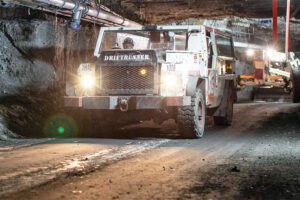This is a continuation of Daniel Hummerdal’s 2016, April 6 “Safety Audits Differently” posting.
Written by Gary Wong, Safety Differently
Imagine you work in a company with a good safety record. By “good”, you are in the upper quartile as per the benchmarking stats in your industry. Things were rolling along nicely until this past year. There was a steep increase in failures which has led to concerns over the safety culture.
Historically there have 2 safety-related events but last year there were 10. Accident investigation reports show it’s not one category but several: Bodily reaction and exertion, Contact with equipment, Misuse of hazardous materials, Falls and falling objects. Fortunately there were no fatalities; most were classified as medical aids but one resulted in a serious injury. Three medical aid injuries were from contacting moving equipment, two were related to improper tool and glove use. The serious injury was due to a worker falling off a ladder.
What upsets you is that the pre-job briefing did not identify the correct glove or the proper use of hazardous materials. You also read the near-miss incidents and heard disturbing rumours from the grapevine that a some recent close calls went unreported. Something needs to be done but what should you do?
One option is to do a safety audit. It will be highly visible and show executives and workers you mean business. Phase 1 will consist of conducting an assessment and developing action plans to close any performance gaps. The gaps typically concentrate on strengthening safety robustness – how well practices follow safety policies, systems, standards, regulations, rules to avoid known failures. Phase 2 will implement the action plans to ensure that actions are being completed with quality and in a timely manner. A survey will gauge worker response. The safety audit project will end with a report that details the completion of the actions and observations on how the organization has responded to the implementation of the plan.
For optics reasons, you are considering hiring an external consultant with safety expertise. This expert ideally would know what to look for and through interviews and field observations pinpoint root causes. Action plans will be formulated to close the gaps. If done carefully, no blame will be attached anybody. To ensure no one or group is singled out, any subsequent compliance training and testing will be given to all employees. Assuming all goes well, you can turn the page, close the chapter, and march on assuming all is well. Or is it?
You hesitate because you’ve experienced safety audits before. Yes, there are short-term improvements (Hawthorne effect?) but eventually you noticed that people drifted back to old habits and patterns. Failure (personal injury or damage to equipment, tools, facilities) didn’t happen until years later, well after all the audit hubbub had dissipated. A bit of “what-iffing” is making you pause about going down the safety audit path again:
- What if the external safety consultants are trapped by their expertise because they already believe they have the solution and see the job as implementing their solution and making it work? That is, what if they are great at using a hammer and therefore see everything as a nail, including a screw?
- What if the safety audit is built around a position that is the consultant’s ideal future state but not ours?
- What if the survey questionnaire is designed to validate what the safety consultants have seen in the past?
- What if front-line workers are reluctant to answer questions during interviews for feelings of being put on trial, fear of being blamed, or worse, subjects in a perceived witch hunt?
- What if safety personnel, supervisors, managers, executives are reluctant to answer questions during interviews or complete survey questionnaires for the fear of being held accountable for failures under their watch?
- What if employees feel it’s very unsettling to have someone looking their shoulders recording field observations? What if the union complains because it’s deemed a regression to the Scientific Management era (viz., Charlie Chaplin’s movie ‘Modern Times’)?
- What if the performance gaps identified are measured against Safety Management System (SMS) outcomes that are difficult to quantify (e.g., All personnel must report near-miss incidents at all times)?
- What if we develop an action plan and during implementation realize the assumptions made about the future are wrong?
- What if during implementation a better solution emerges than the one recommended?
- What if the expenditure on a safety audit just reinforces what we know and nothing new is learned?
Are there other options besides a traditional safety audit? Yes, there is. And it’s different.
A sense-making approach boosts the capacity of people and organizations to handle their activities successfully, under varying conditions. It recognizes the real world is replete with safety paradoxes and dilemmas that workers must struggle with on a daily basis. The proven methods are pragmatic and make sense of complexity in safety in order to act. The stories gathered from the workforce including contractors often go beyond safety robustness (preventing failure) and provide insights into the company’s level of safety resilience. Resilience is the ability to quickly recover after a failure, speedily implement an unanticipated opportunity arising from an event, and respond early to an alert that a major catastrophe might be looming over the horizon.
The paradigm is not as an expert with deep knowledge of best practices in safety but as an anthropologist informed by the historical evolution of safety practices. The Santa Fe Institute noted companies operate in industries which are complex adaptive systems (CAS). Safety is not a product nor a service; it is an emergent property of a complex adaptive system. For instance, safety rules enable safety to emerge but too many rules can overwhelm workers and create confusion. If a tipping point is reached, danger emerges in the form of workers doing workarounds or deliberately ignoring rules to get work done.
Anthropologists believe culture answers can best be found by engaging the total workforce. The sense-making consultant’s role is to understand the decisions people have made. Elevating behaviour similarities and differences can highlight what forces are at play that influence people to choose to stay within compliance boundaries or take calculated risks.
By applying complexity-based thinking, here’s how the what-if concerns listed above are addressed.
- Escape expertise entrapment.
There are no preconceived notions or solutions. As ethnographers, observations that describe the safety culture are recorded. Stories are easy to capture since people are born storytellers. Stories add context, can describe complex situations, and emotionally engage humans. - Be mindful.
You can only act to change the Present. Therefore, attention is placed on the current situation and not some ideal future state that may or may not materialize. - Stay clear of cognitive dissonance.
This leads to the confirmation bias — the often unconscious act of referencing only those perspectives that fuel pre-existing views.
There are no survey questionnaires. Questions asked are simple prompts to help workers get started in sharing their stories. Stories are very effective in capturing decisions people must make dealing with unexpected varying conditions such as conflicting safety rules, lack of proper equipment, tension amongst safety, productivity, and legal compliance. - Avoid confrontation.
Front-line workers are not required to answer audit questions. They have the trust and freedom to tell any story they wish. It’s what matters most to them, not what a safety expert thinks is important and needs to interrogate. - Treat everyone the same.
Safety personnel, supervisors, managers, executives also get to tell their stories. Their behaviours and interactions play a huge role in shaping the safety culture. There is no “Them versus Us”; it’s anyone and everyone in the CAS. - Make it easy and comfortable.
There is minimal uneasiness with recording field observations since workers choose the topics. A story with video might be showing what goes wrong or what goes right. If union agents are present, they are welcomed to tell their safety stories and add diversity to the narrative mosaic. - Be guided by the compass, not the clock.
Performance improvement is achieved by focusing on direction, not targeted SMS outcomes. This avoids the dilemma of workers through their stories identifying SMS as a problem. Direction comes from asking: “Where do we want fewer stories like these and more stories like that?” The effectiveness of an performance improvement intervention is measured by the shift in subsequent stories told. - Choose safe-to-fail over fail-safe.
Avoid the time and effort developing a robust fail-safe action plan and then weakening it with CYA assumptions. When dealing with uncertainty and ambiguity, probe the CAS with safe-to-fail experiments. This is the essence behind Nudge theory, introducing small interventions to influence behaviour changes. - Sail, not rail.
Think of navigating a ship on a uncontrollable sea of complexity from driving a train on a controllable track of certainty. Deviation manoeuvres like tacking and jibing are expected. By designing actions to be small, emergence of surprising consequences can be better handled. Positive serendipitous opportunities heading in the desired direction can be immediately seized. On the other hand, negative consequences are quickly dampened. - Focus on what you don’t know.
A sense-making approach opens the individual’s and thus the company’s mindset to Knowledge (known knowns) as well as Ignorance (unknowns, unknowables). New learning comes from exploring Ignorance. By sensing different behaviour patterns that emerge from the nudges, it becomes clearer why people behave the way they do. This discovery may lead to new ways to strengthen safety robustness + build safety resilience. This is managing the evolutionary potential of the Present, one small step at a time.
What would you choose to do? Same old, same old or safety differently?















Hi dude
Great informative articles on safety audits , please share more useful links . Keep providing us more blogs updated !